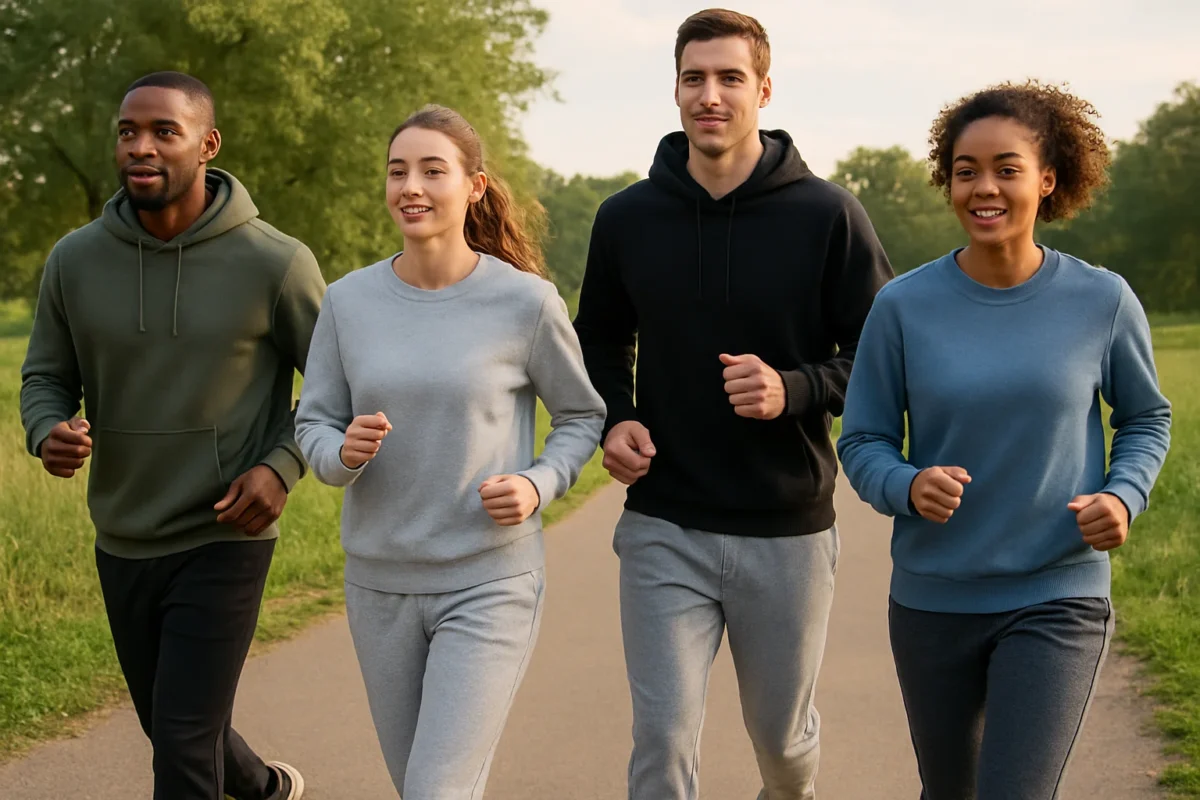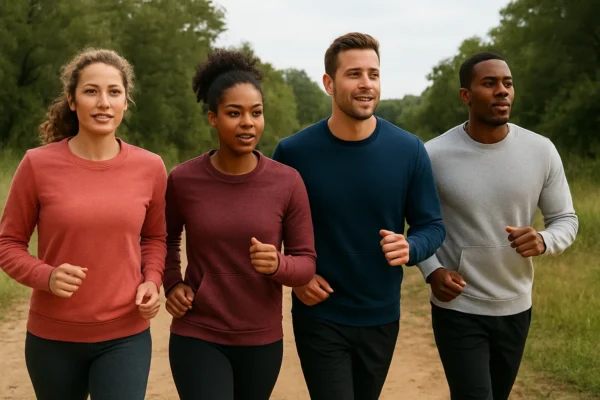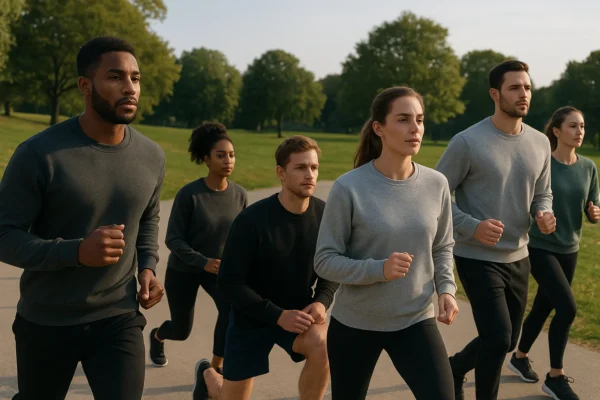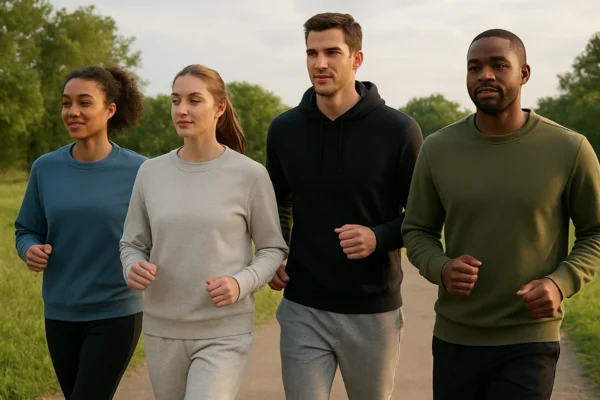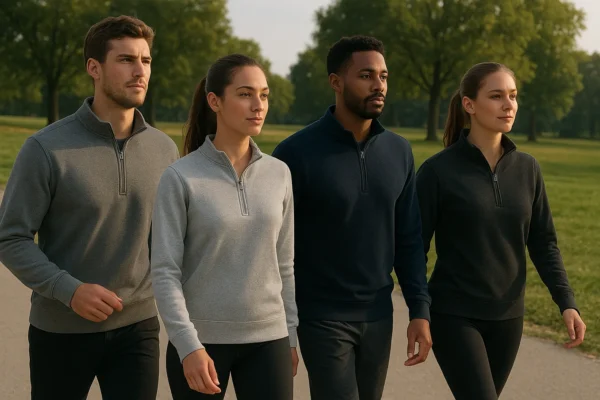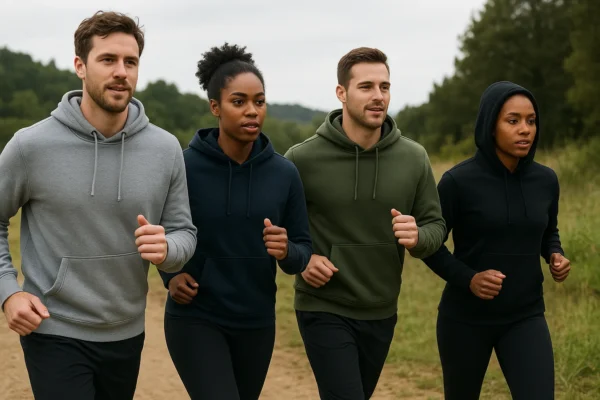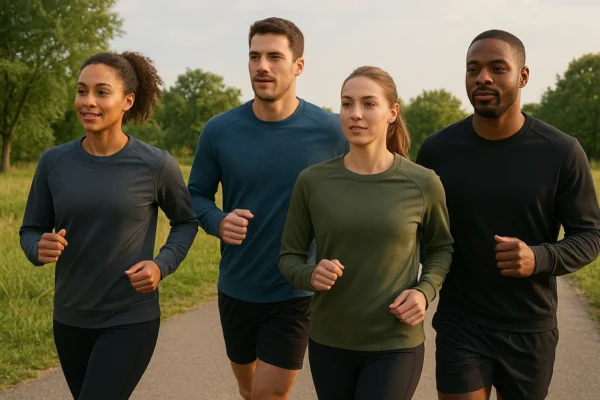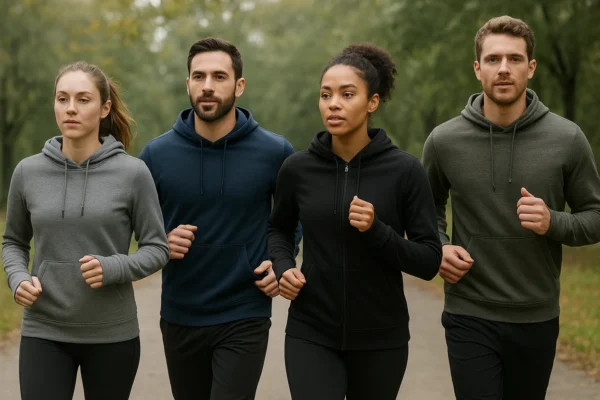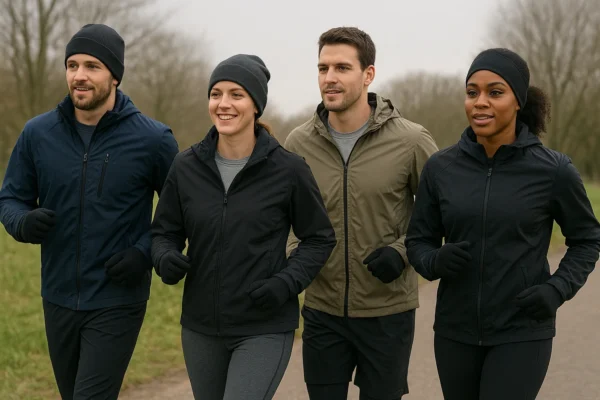Best Workout Sweatshirts for Outdoor Training
Whether you’re hitting the trails at sunrise or powering through evening workouts, the right sweatshirt can make all the difference. Outdoor training demands more than just any layer—it requires gear that keeps you warm without overheating, moves with your body, and stays comfortable from start to finish. As performance wear continues to blur the lines between function and fashion, today’s sweatshirts are designed to do it all.
In this article, we’ll break down what makes a great training sweatshirt, from must-have features and the best materials to look for, to our top picks and style tips. Whether you’re training hard or just looking the part, we’ve got you covered—literally.
What to Look for in a Workout Sweatshirt
Fabric & Material Technology
The right fabric can make or break your workout experience. Look for moisture-wicking materials like polyester blends, Nike’s Dri-FIT, or French terry that pull sweat away from your skin to keep you dry and comfortable. These fabrics are designed to dry quickly and remain breathable, helping you avoid overheating during intense training.
A good workout sweatshirt should also offer some degree of stretch—materials with spandex or elastane allow for a full range of motion, which is crucial for dynamic movements like lifting, stretching, or running.
Fit & Design
Fit isn’t just about aesthetics—it affects how well your sweatshirt performs. An athletic fit typically contours to the body, reducing bulk and making it easier to layer under jackets or vests. On the other hand, a relaxed fit may offer more comfort and airflow, especially during lower-intensity workouts or warm-ups.
Functional details also matter: thumb holes keep sleeves in place, hoods provide extra warmth, and zippered pockets securely store essentials like keys or energy gels.
Weather Protection
If you’re training outdoors, weather resistance is key. For colder conditions, choose thermal or fleece-lined sweatshirts that trap body heat while remaining breathable. In windy or damp weather, go for sweatshirts with wind-resistant or water-repellent finishes—these added features can help keep you comfortable and focused when the elements aren’t cooperating.
Top Sweatshirt Styles for Outdoor Workouts
Pullover Sweatshirts
Pullover sweatshirts are a go-to choice for many outdoor athletes thanks to their simplicity and versatility. They’re easy to layer over a base tee and make a great option for warming up or cooling down. Look for minimalist designs made with technical fabrics if you want something sleek yet performance-ready. Brands like Lululemon, Under Armour, and Adidas offer high-performance pullovers that balance comfort, moisture management, and mobility—without unnecessary bulk.
Half-Zip and Quarter-Zip Sweatshirts
If you’re after adjustable ventilation, half-zip and quarter-zip sweatshirts are ideal. The zipper lets you cool down quickly without removing a layer, making them great for changing weather conditions. These styles are especially useful during transitional seasons like spring or fall. They’re also easy to pull on or take off, which is handy when you’re on the go. Many modern designs combine sleek aesthetics with smart performance features, making them functional for training and stylish enough for post-workout errands.
Hoodie Sweatshirts
A hoodie is a classic for a reason. The added head and neck coverage helps lock in warmth, making it perfect for cold mornings, windy trails, or winter training. Some options come with adjustable drawstrings, kangaroo pockets, or even thermal linings for enhanced protection. Just be sure to choose one with breathable, moisture-wicking fabric—you don’t want a hoodie that traps sweat during your session.
Lightweight Performance Sweatshirts
For those high-intensity outdoor workouts or unpredictable in-between seasons, lightweight performance sweatshirts are a smart pick. Designed to be breathable, stretchy, and easy to pack, they’re perfect for runners, HIIT enthusiasts, or circuit trainers. Many of these sweatshirts are thin enough to stash in a running belt or backpack, yet still offer just enough coverage for cooler air. Look for versions with mesh panels or quick-dry fabrics to keep your body temp in check as you push the pace.
Best Materials for Outdoor Sweatshirt Performance
Polyester and Spandex Blends
One of the most common fabric combos in performance sweatshirts, polyester and spandex blends strike a perfect balance between stretch, durability, and sweat management. Polyester wicks moisture away from your skin, helping to keep you dry, while spandex adds the flexibility you need for full range of motion. This blend is especially great for high-movement outdoor workouts like running, HIIT, or functional training, where breathability and mobility are non-negotiable. It also tends to dry quickly, which is a bonus for unpredictable weather or back-to-back training days.
Merino Wool
Don’t let the word “wool” fool you—Merino wool is a game-changer for outdoor workouts, especially in cooler weather. It’s naturally insulating, but also incredibly breathable and moisture-wicking, helping to regulate your body temperature without overheating.
One of its best features? It’s odor-resistant, so you can wear it multiple times before needing a wash—ideal for multi-day hikes or long trail runs. Plus, Merino is soft against the skin, unlike traditional wool, making it a favorite for cold-weather athletes.
Recycled and Sustainable Fabrics
More brands are prioritizing eco-friendly materials, and it’s now easier than ever to find sweatshirts made with recycled polyester, organic cotton, or blended sustainable fibers. These materials are often just as high-performing as traditional ones but come with a smaller environmental footprint.
Leading activewear companies like Patagonia, Nike, and Girlfriend Collective are incorporating recycled fabrics into their lines without sacrificing comfort, breathability, or durability. If you want your gear to perform well and align with your values, this is the way to go.
Layering Tips for Outdoor Training
Base Layers and Sweatshirts
A good layering system starts with the right base layer. For most outdoor workouts, this means a moisture-wicking tee made of polyester or merino wool. These fabrics help pull sweat away from your skin, keeping you dry and comfortable underneath your sweatshirt.
On colder days, consider adding a thermal or insulated base layer for extra warmth especially if you’re training at dawn, in the mountains, or in sub-zero temps. The key is to avoid cotton, which holds onto moisture and can leave you chilled once you stop moving.
Jackets Over Sweatshirts
When conditions are unpredictable—think wind, light rain, or fluctuating temps—layering a lightweight jacket over your sweatshirt can make a big difference. Windbreakers, running vests, and water-resistant shells provide a protective outer layer without weighing you down.
Look for options with ventilation panels or zip openings so you can manage your body temperature as you train. This setup works well for runners, cyclists, and anyone moving through varied terrain or changing weather.
Accessorizing Smartly
Accessories might seem small, but they can have a big impact on your comfort during outdoor sessions. Lightweight gloves, beanies, and headbands help retain body heat and protect against early-morning chills without restricting movement.
For those training in low-light hours—before sunrise or after sunset—reflective details on your sweatshirt or add-on gear are essential for visibility and safety. Think function first, but don’t be afraid to let your style show through.
Conclusion
Choosing the right sweatshirt for outdoor training isn’t just about style—it’s about performance, comfort, and adaptability. A great workout sweatshirt should be made from moisture-wicking, breathable fabrics, offer freedom of movement, and match your training intensity and weather conditions. Whether you prefer a streamlined pullover, a vented quarter-zip, or a cozy hoodie, the key lies in balancing fit, function, and fabric.
Think about your training routine: Are you braving cold mornings? Opt for fleece-lined or Merino wool options. Need something lightweight for a run? Go with quick-dry, stretchy layers. And don’t forget the extras—like zip pockets, thumb holes, or reflective details—that can elevate your training experience.
At the end of the day, your sweatshirt should work as hard as you do—supporting your goals while keeping you comfortable outdoors, whatever the weather.

